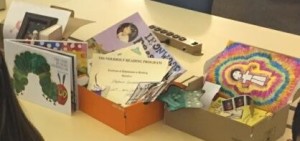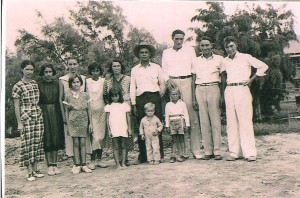By: The Office of Strategy, Planning & Accountability (SPA)
In 2012, ASU conducted a Preliminary Stakeholder Needs Assessment for GCC. One of the findings pointed out that there was a need for GCC STEM students to have practical experience in research through internship opportunities. In response to this need, the Office of Strategy, Planning & Accountability (SPA) established a formal internship opportunity with GCC’s psychology department. Each spring semester, psychology professors recommend a small number of high-performing students who have successfully completed (or in the process of completing) Introduction to Statistics (PSY230) and Research Methods (PSY290) and are interested in the internship. The research team then interviews them and makes a selection. The selected student works with the research team throughout the semester on specific projects.
SPA’s pioneering student intern Wendie, completed her internship in spring 2014. Following is Wendie’s feedback regarding her learning outcomes from her experience at SPA.
1) First and foremost, I learned that a successful research study takes not only teamwork within the office, but also teamwork from the organization, as well. I was working on one specific project all semester, which was the Gaucho Student Survey (GSS). The making of the survey had just started right before I began my internship and the making of the survey itself was continuing after I left. I never really understood how beneficial it is to have outside collaborators, until I went to SPA meetings to talk about this specific survey. It is so powerful to have different knowledgeable people work together because they may have ideas no one else thought of, they may catch a mistake we missed, or they would help us better word something for a person at the college level to understand. I have no doubt that the survey I helped with was successful due to the amount of team effort and work went into it. That is what makes anything successful: teamwork.
2) I learned an extensive amount about survey work. Phil, my director, showed me past survey studies that had been administered at GCC and this helped myself tremendously when brainstorming about the GSS. In addition, I had the opportunity to help Jay with an organizing a survey that was already going to be administered at all Maricopa Community Colleges. Survey studies take just as much work as any other research project and the results can be very powerful after finding the correct organizing, word choice, and main idea you are trying to find. This was my first quasi-experimental study I participated in and it was a great experience nonetheless.
3) I learned much more about SPSS. SPSS is program where data is entered and analyses can be performed. Since I was fresh out of my research methods class, I was still (and still am) learning all about SPSS. I was able, towards the end of my internship, to actually input data to get some practice. There are so many different types of tests a person can run in SPSS that it can be overwhelming. Thankfully, Phil explained everything thoroughly and efficiently to where I was able to run a few tests he wanted me to perform on data he already possessed. I was looking for significance within the analyses and recorded which results were significant and which were not. SPSS is something that has to be consistently practiced, but as I grow in my education, I will one day be just as good as everyone within the SPA team.
4) I learned how to successfully research past research articles. Before any research project can begin, you must have information backing up what exactly you want to research. There are multiple different articles out in the internet database and even books that is takes an extensive amount of time to do. When I first began with SPA, I began researching from day one until my very last day. You have to thoroughly read through everything to get an idea of what an article is about and if it will help in what you are trying to research now. There is never a limit on how much research that can be used within a research project. The more information, the better. I definitely learned that from the amount of hours I spent doing so. Not only do you have to successful research various articles, but everything must be cited correctly within a bibliography, as well. For myself personally, finding research is the hardest part of any project because this sets a foundation of where your specific project will go. The amount of research I did for SPA has helped me even within my schoolwork because with anything anyone does anymore, it needs research.
5) Most importantly to myself, I learned exactly what I want to do one day in the field of Psychology thanks to this internship. I have decided to become an Industrial and Organizational Psychologist and I hope to one-day work for a school system doing some form of research. This internship opportunity with SPA taught me a lot about how I want students to be successful in their studies, what exactly will draw them into college, and what will keep them in their studies. School is something I hold dear to my heart and working hands on with something that will be impactful for students is very satisfying. The SPA teams works very hard to get the results that the organization itself needs and I could tell how passionate each member of SPA is in regards to their studies. Each and every one of them including Phil, Alka, Jay, Eddie, Heather, and Lisa, has inspired me to follow along in their footsteps. I am not sure where I will end up in the future in regards to my future practice, but it will be very similar to what I have taken away from SPA. The internship in a whole was a wonderful experience that I will always be grateful for.
Our newest intern, Amiee, from the psychology department began her internship this semester with SPA and is hard at work with the research team! For more information, please email us at spa@gccaz.edu.






